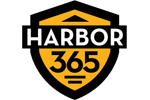For any garment that we wear, it is always advised to read the label properly, in order to know about the composition and other important information regarding the garment. For any protective workwear, reading labels on a Flame Resistant workwear can be a little confusing for the first timers. In that case, how do you know for sure that the clothing you have offers the protection you need? FR clothing is required to have specific information on its label in order to comply with industry safety standards. In this post, we share the basics of what to look for on your FR clothing labels.
Most importantly, you want to make sure the garment complies with the standard you’re trying to meet and protects you from the hazards you face. As many industry experts explain through various mediums, the label specifies the standards according to the hazards you’re exposed to.
For Flash Fire Hazards:
In general, look for compliance with and third-party certification of NFPA 2112. You should not allow component compliance – you want the garment as a whole to be compliant, not just parts of the garment.
For Arc Flash Hazards:
In general, look for compliance with NFPA 70E and ASTM F1506. ASTM F1506 has its own set of labeling requirements, including that the arc rating should be indicated on the garment itself.
For FR Rainwear:
Look for ASTM F1891 on arc flash rainwear and ASTM F2733 on flash fire rainwear. Because rainwear is made from a different textile – one that is waterproof – it follows a different set of standards from those listed above for FR dailywear.
If you’re in a managed FR clothing program, you can rest assured knowing that the garments in your company’s custom catalog have been selected based on the product specifications shared with the manufacturer – presumably based on the needs identified by your company’s risk assessment. Additionally, at Harbor365, the garments are labeled in accordance with industry standards and we thoroughly vet all of the FR brands we distribute to ensure they are in compliance with industry safety standards. Still, it’s important to check your garment label to ensure it’s providing the protection you require on the job. If you’re not in a company managed FR clothing program, or with a trusted supplier, you should always check your FR garment labels and beware of counterfeit FR clothing, which could contain a fake label.

